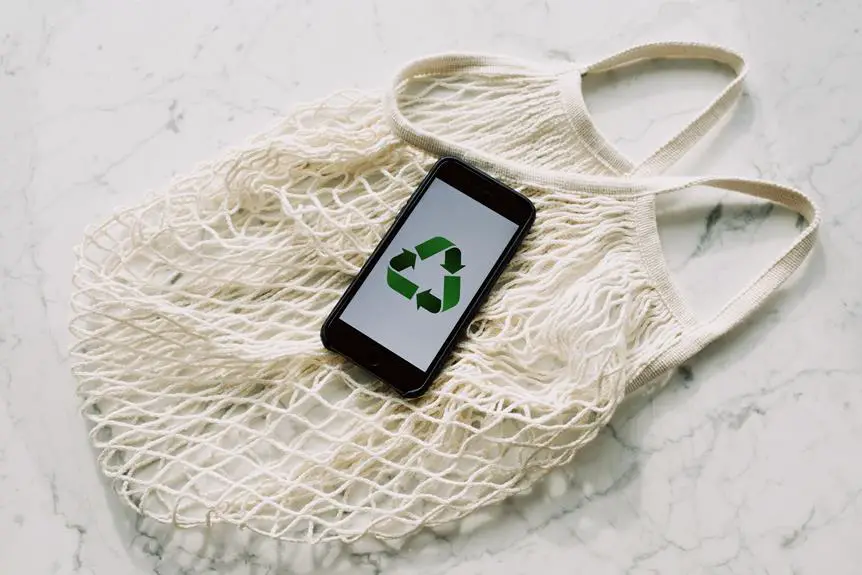Wondering if screen printing fabric mesh lives up to the hype? You're seeking a comprehensive understanding of this technique.
Explore the advantages, such as fine detail and durability, as well as the drawbacks, like limited color options and potential mesh damage.
Discover how to select the right fabric mesh for your specific printing needs and the various printing techniques available.
Delve into the maintenance and longevity of fabric mesh, and consider the cost implications.
By the end, you'll have a well-rounded perspective on whether screen printing fabric mesh is truly worth all the attention it receives.
Key Takeaways
- Fabric mesh offers improved print quality with higher mesh count.
- Fabric mesh allows for printing on various materials and enables the printing of complex designs.
- Ink bleed-through risk can occur when using fabric mesh, but it can be minimized with careful consideration of factors.
- Maintaining mesh tension is challenging and requires ongoing maintenance, specialized equipment, and expertise.
The Basics of Fabric Mesh
First, you need to understand that fabric mesh is the foundational material used in screen printing, allowing ink to pass through onto the fabric. Choosing the right mesh is crucial in achieving the desired print quality. The mesh count refers to the number of threads per inch.
A lower mesh count, such as 60-86, is suitable for printing with specialty inks like metallic or glitter, as it allows for a higher ink deposit. On the other hand, a higher mesh count, around 160-305, is ideal for finer detail and halftones. It offers better control over ink deposit and is suitable for printing on smoother surfaces like T-shirts. Understanding the intricacies of mesh selection is essential for achieving the desired print results.
Ink deposit control is a critical factor when it comes to fabric mesh. The mesh tension, stencil thickness, and squeegee pressure all play a role in regulating the amount of ink deposited onto the fabric. Too much ink can lead to bleeding and smudging, while too little ink may result in a faint or incomplete print. Achieving the perfect balance is a skill that requires practice and an understanding of the interplay between mesh, ink, and pressure.
Mastering these elements is fundamental to achieving consistent and high-quality results in screen printing.
Advantages of Fabric Mesh
When selecting fabric mesh for screen printing, consider the advantages of using a higher mesh count for achieving finer detail and sharper prints.
- Improved Quality: Higher mesh count fabric offers better ink control, resulting in sharper and more intricate designs. This is particularly beneficial when working with detailed graphics or fine text, enhancing the overall quality of the printed fabric.
- Wider Applications: The use of higher mesh count fabric expands the range of applications for screen printing. It allows for printing on various materials such as paper, fabric, glass, and metal, making it a versatile choice for different projects.
- Innovation in Design: The use of finer mesh enables the printing of more complex and innovative designs. This provides greater creative freedom for artists and designers, allowing them to push the boundaries of traditional screen printing.
Disadvantages of Fabric Mesh
When considering the use of fabric mesh for screen printing, it's important to be aware of potential drawbacks.
Ink bleed-through risk can be a concern, especially when working with more fluid or thinner inks.
Additionally, the limited ability to create intricate designs and the need for regular mesh tension maintenance are factors to consider when evaluating the suitability of fabric mesh for your specific printing needs.
Ink Bleed-Through Risk
You may encounter ink bleed-through risk when using fabric mesh for screen printing. This issue arises due to ink penetration, which can be influenced by fabric quality. Factors such as thread count, yarn thickness, and weave tightness can affect ink bleed-through.
Additionally, color saturation and ink thickness play a crucial role in determining the extent of bleed-through. When ink is too thin or the color isn't properly saturated, it may seep through the fabric mesh, resulting in smudged or blurry prints.
It's essential to carefully consider these factors to minimize the risk of ink bleed-through when using fabric mesh for screen printing. Understanding the relationship between ink, fabric, and printing techniques is pivotal in achieving high-quality, professional results.
Limited Intricate Designs
The fabric mesh for screen printing limits intricate designs due to its mesh size and thread count. This constraint hinders the full realization of design intricacy, imposing limitations on artistic expression.
The mesh size determines the level of detail that can be achieved, with finer meshes allowing for more intricate designs. However, finer meshes may not be suitable for all types of ink and can lead to other printing challenges.
Additionally, the thread count of the mesh affects the level of precision in design rendering, further contributing to design constraints.
While fabric mesh offers numerous advantages in screen printing, including durability and versatility, it's crucial to acknowledge its limitations in accommodating intricate designs. Understanding these limitations will enable you to make informed decisions when choosing the appropriate printing method for your artistic endeavors.
Mesh Tension Maintenance
Maintaining mesh tension in screen printing fabric can be challenging, affecting the quality of your prints and requiring constant adjustments. When considering tension control, it's important to note that fabric mesh can lose tension over time, leading to inconsistent printing results.
Factors such as humidity and temperature fluctuations can contribute to this issue, requiring frequent monitoring and readjustments. Additionally, the cleaning techniques used can impact mesh tension, as improper cleaning methods may stretch or damage the fabric mesh, further exacerbating tension control issues.
Furthermore, the need for specialized equipment and expertise to effectively maintain mesh tension adds to the complexity and cost of screen printing with fabric mesh. Therefore, it's essential to carefully consider the ongoing maintenance requirements before investing in this printing method.
Choosing the Right Fabric Mesh
When selecting fabric mesh for screen printing, it's essential to consider the mesh count as it directly impacts the level of detail and ink deposit control in your prints.
Additionally, the durability and lifespan of the fabric mesh are crucial factors to weigh, as they can affect the longevity and quality of your screen printing operations.
Mesh Count Importance
Choosing the right fabric mesh for screen printing requires careful consideration of the mesh count. The mesh count accuracy directly impacts the level of detail and intricacy that can be achieved in the printed design.
Here's why mesh count is important:
- Ink Coverage: A higher mesh count results in finer details and better ink control, making it suitable for designs with fine lines and intricate details. On the other hand, a lower mesh count allows for heavier ink deposits, making it ideal for bold and solid designs.
- Image Resolution: The mesh count determines the level of image resolution that can be achieved. A higher mesh count enables the reproduction of finer details, while a lower mesh count may be more suitable for designs with larger, bolder elements.
- Print Substrate: Different substrates require different mesh counts for optimal ink penetration and adhesion. Understanding the relationship between mesh count and substrate is crucial for achieving the desired print quality.
Ink Deposit Control
To achieve optimal ink deposit control in screen printing, you need to carefully consider the fabric mesh you choose, ensuring it aligns with the desired level of detail and ink coverage discussed previously.
The fabric mesh plays a crucial role in controlling ink deposit by determining the amount of ink that passes through during the printing process. A lower mesh count allows for a heavier ink deposit, ideal for bold designs and solid colors, while a higher mesh count is better suited for fine details and intricate designs, controlling the ink deposit for precise results.
Additionally, proper fabric mesh maintenance is essential to ensure consistent ink deposit control. Regular cleaning and inspection of the fabric mesh help maintain its integrity and prevent ink from seeping through unevenly, ultimately affecting the print quality.
Therefore, choosing the right fabric mesh and maintaining it properly are integral steps in achieving precise ink deposit control in screen printing.
Durability and Lifespan
To ensure optimal durability and lifespan for your fabric mesh in screen printing, it's essential to carefully assess the material's quality and suitability for your specific printing needs. Maintaining a focus on both ink deposit control and the long-term performance of the fabric mesh will result in consistent, high-quality prints.
- Durability Test: Conduct thorough durability tests on different fabric meshes to evaluate their resilience to repeated use, cleaning, and exposure to various inks.
- Perform abrasion resistance tests to determine how well the fabric mesh holds up against wear and tear during the printing process.
- Evaluate the fabric's dimensional stability under tension to assess its ability to maintain its shape and integrity over time.
- Consider conducting chemical resistance tests to gauge the fabric mesh's resistance to ink and cleaning solvents, ensuring its longevity in demanding printing environments.
Fabric Mesh Printing Techniques
Considering the intricacies and advantages of fabric mesh printing techniques, you'll find that mastering the tension and alignment of the mesh is crucial for achieving precise and vibrant prints. Understanding the nuances of each fabric mesh alternative is essential for achieving the desired results. Innovative printing techniques also play a significant role in fabric mesh printing. Techniques such as half-toning, where varying sizes of dots are used to create the illusion of different shades, require a deep understanding of the fabric mesh and the printing process. Additionally, mastering techniques like overprinting and color blending can elevate the final output of fabric mesh printing, providing opportunities for unique and complex designs. In mastering fabric mesh printing techniques, it's crucial to consider the interplay between different mesh types and innovative printing techniques to achieve the best results.
Maintenance and Longevity of Fabric Mesh
Maintaining and preserving the longevity of fabric mesh requires regular cleaning and proper storage to ensure optimal printing results. To extend the lifespan of your fabric mesh and maintain its quality, consider the following:
- Cleaning Methods:
- Regularly clean the fabric mesh after each use to remove ink residue and prevent clogging of the mesh apertures. Use a mild detergent and lukewarm water to gently scrub the mesh, avoiding harsh chemicals that could damage the material.
- Consider investing in professional cleaning products specifically designed for fabric mesh to ensure thorough cleaning without causing wear and tear.
- Proper Storage:
- Store the fabric mesh in a clean, dry, and temperature-controlled environment to prevent mold growth and degradation of the mesh material.
- Avoid folding or creasing the fabric mesh during storage, as this can lead to permanent damage and affect the quality of your prints.
Regular maintenance and proper care won't only prolong the life of your fabric mesh but also contribute to consistent and high-quality printing results. By implementing appropriate cleaning methods and storage practices, you can effectively mitigate wear and tear, ensuring that your fabric mesh remains in optimal condition for an extended period.
Cost Considerations for Fabric Mesh
When assessing the cost considerations for fabric mesh, it's essential to factor in not only the initial investment but also the long-term value it brings to your printing business.
In terms of cost analysis, fabric mesh can be a substantial investment, but its longevity and performance must be considered.
It's important to note that the market trends for fabric mesh are indicating an increasing demand for high-quality, durable mesh due to the growing preference for intricate and detailed designs in screen printing.
While the initial cost may seem significant, the long-term value of fabric mesh lies in its durability and ability to maintain print quality over time. This longevity may result in reduced replacement and maintenance costs, ultimately providing a favorable return on investment.
Additionally, the market trends suggest that investing in high-quality fabric mesh is aligned with the direction of the industry, ensuring that your printing business remains competitive and capable of meeting evolving customer demands.
Therefore, when considering the cost of fabric mesh, it's crucial to weigh the initial investment against the long-term benefits and market trends to make an informed decision for your printing business.
Frequently Asked Questions
What Are the Different Types of Fabric Mesh Available for Screen Printing?
When considering types of fabric mesh for screen printing, it's important to evaluate their suitability for various applications, material durability, and reusability. Understanding these factors will help you choose the best mesh for your specific needs.
Can Fabric Mesh Be Used for Printing on Different Types of Materials, Such as Paper or Plastic?
Yes, fabric mesh can be used for printing on plastic. Mesh compatibility varies based on the type of fabric and the plastic material. Understanding the specific requirements for each material is crucial for achieving optimal results.
Are There Any Environmental Considerations to Take Into Account When Using Fabric Mesh for Screen Printing?
When using fabric mesh for screen printing, it's crucial to consider the environmental impact. Embracing sustainable practices such as using eco-friendly inks and properly disposing of materials can minimize harm to the environment.
How Does the Thickness of the Fabric Mesh Affect the Final Print Quality?
When considering fabric mesh thickness, it significantly impacts ink absorption, print resolution, and fabric mesh tension. Thicker mesh allows for higher ink coverage but may compromise fine print details, affecting print durability.
Can Fabric Mesh Be Reused and Recycled After It Has Been Used for Screen Printing?
Yes, fabric mesh used in screen printing can be reused and recycled, contributing to sustainability. Reusing mesh reduces waste and environmental impact. Recycling the mesh at the end of its life cycle supports a more eco-friendly approach to screen printing.
- Can You Paint Chiffon Fabric? - April 23, 2024
- Is Chiffon a Lightweight? - April 23, 2024
- Is Chiffon Cool in Hot Weather? - April 23, 2024






